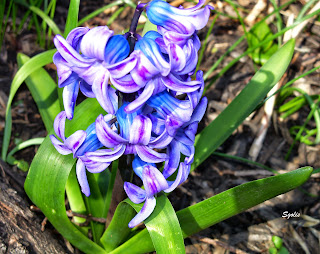 |
| Peppermint flower |
Benefit from your garden mint by growing the herbs for culinary, medicinal, aromatherapy, and as a repellent for mosquitoes and other
flying insects.
Mint can be grown in containers, in the ground or in various sections of your yard.
I have a dog kennel and find that when I planted the garden mint on the exterior of the kennels that the mint controlled the dog odors and also repelled fleas and ticks. If you have a large yard I would recommend growing the mint in the ground, however, if you have a small yard or live in an apartment then grow mint in a container and set it in a sunny location or grow under a light.
Mint can be grown in containers, in the ground or in various sections of your yard.
I have a dog kennel and find that when I planted the garden mint on the exterior of the kennels that the mint controlled the dog odors and also repelled fleas and ticks. If you have a large yard I would recommend growing the mint in the ground, however, if you have a small yard or live in an apartment then grow mint in a container and set it in a sunny location or grow under a light.
Benefits of Garden Mint
 |
| Chocolate Mint in my backyard |
- Peppermint is a natural remedy for indigestion, heartburn, headache, and will help to reduce inflammation caused by acne. If you plant a mixture of peppermint, spearmint, and apple mint in sections in your yard these fragrant herbs will repel mosquitoes and other flying insects.
- Other uses for mint would be to add it ice tea, brew medicinal herbal tea, garnish foods with mint, make mint jelly, or antibacterial soap. Growing garden mint is easy and it will provide you with years of fragrant flowers and leaves.
- Garden mints have a delicious scent and flavor. When planning your mint garden choose mint that appeals to your senses.
Here are a few of my favorite garden mints. Buy seed packets of mint at Walmart.com Ebay.com Parkseed.com or Gurneys.com or Tractor Supply. Start seeds indoors and then transplant after the danger of frost has passed.
Corn
mint
Peppermint
Spearmint
Apple
mint
Pineapple
mint
Orange mint
Berries and Cream mint
Lemon mint
Chocolate mint
Candy mint
Berries and Cream mint
Lemon mint
Chocolate mint
Candy mint
Chocolate mint
When
to Grow Mint
Start to grow mint seeds indoors 7 to 8 weeks before the last spring frost or you could
sow the seeds directly into the garden bed when the spring temperatures warm
and the threat of frost has passed.
Where
to Grow
Grow
indoors by planting seeds in soil that is mixed with compost or manure.
Set the seeds on top of the soil and then press the seeds into the soil with
the eraser end of a pencil. Plant the seed one inch below the soil
line. Water so that the soil is evenly moist but not wet. Set the mint
containers next to a sunny window or under a grow light. For outdoor
cultivation choose a garden site that receives full sun and has well-drained
soil.
I
grow spearmint and peppermint on the side of my house. These plants need room
to grow as they have a spreading nature.
I spaced my plant two feet apart. The mint grows down a slope and I
found that the spreading nature of the mint is a good way to control erosion.
Ready
the Garden for Planting Mint Outdoors
Use
your tiller or spade to ready the soil for planting. Remove all of the grass, rocks, and weeds from
the planting area. Work the soil until it is a fine texture. Amend
the soil with compost or manure. Set the seeds on top of the soil. Space
the seeds 18 to 24 inches apart and then press the seeds into the soil with the
eraser of a pencil. Plant the seed one inch below the soil line.
Water so that the soil is evenly moist but not wet.
Care
for Mint
- Watch
the soil so that it does not dry out. Garden mint prefers evenly moist soil that is well-drained. It will die if the soil is overly
wet.
- Keep
roots cool by adding a pine bark mulch or leaf mulch around the garden
mint.
- Mint
will bloom in mid to late summer
- Divide
and transplant in the spring to prevent overcrowding.
- Watch
for rust; patches of orange-red on the back of the leaves. Remove all rust-infected plants and get rid of them. Watering mint in the evening will cause rust so don’t do it.
Tips:
Peppermint is a natural way to repel stray cats from your yard. The scent of peppermint is repulsive to a cat.

























